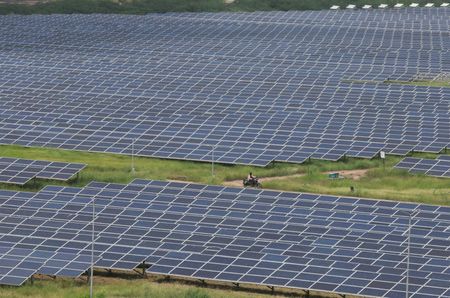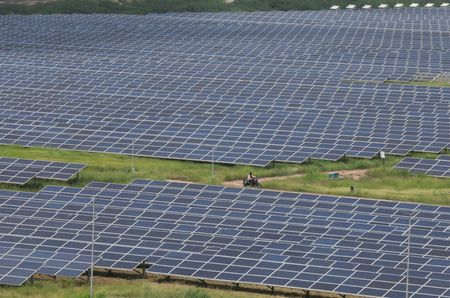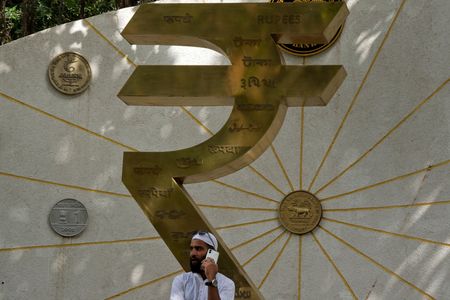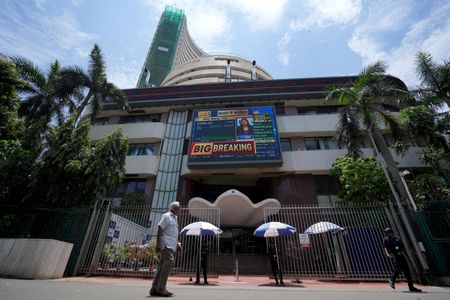By Sethuraman N R
NEW DELHI (Reuters) -India is working to significantly improve the accuracy of its weather forecasting systems to meet the growing demands of its renewable energy sector, a senior government official said on Friday.
With solar and wind energy generation highly dependent on local weather conditions, the country is finding traditional broad-scale forecasts — such as state-wide or regional predictions — no longer sufficient.
“You need a very, very granular forecast,” Central Electricity Authority Chair Ghanshyam Prasad said at a BloombergNEF Summit on green energy, adding that the ability to track cloud movements at specific locations was now critical.
Currently, India’s forecast resolution – the precision of weather predictions over small time intervals or areas – does not match 15-minute operating cycles of the power grid, where weather conditions can shift rapidly, he said. The goal was to improve the resolution to minimum possible distances, he added.
Beyond short-term forecasting, the government is also focusing on building long-term predictive tools that can aid planners in projecting weather trends over multi-year horizons.
“Across the world, nobody has that kind of visibility to forecast weather for that kind of horizon,” Prasad said.
“But we are trying to build long-range forecasting tools which can give us at least some predictions.”
These developments are seen as critical for ensuring power sector stability as India scales up its reliance on renewable sources.
“Until we are able to do that, probably we will not be able to sustain the power sector as such,” Prasad said.
New Delhi has curbed its solar and coal power output during periods of low demand to keep its power grid stable and ease congestion in power lines as green supply rises, the Ministry of New and Renewable Energy (MNRE) told Reuters earlier this week.
India added a record 22 GW of new solar and wind capacity in the first half of 2025 and is planning to increase non-fossil fuel power capacity to 500 GW by 2030.
As part of its reforms, the CEA is also shifting from a five-year energy planning cycle to an annual model.
“That’s a challenge that we have taken — if I do it every year, that means I will be able to capture the forecast better,” the official said.
(Reporting by Sethuraman N R in New Delhi; Editing by Emelia Sithole-Matarise)










